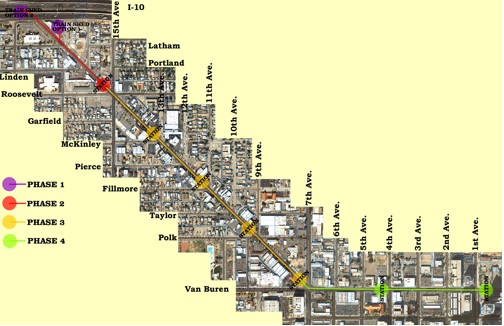The average website visitor reads from a screen at 180 words/minute. I’ve already used 15, so I better get to the point of the matter. Which is this:
The only thing that really affects our supply and demand of homes in Maricopa County is people going out of, and people coming in to, our County. ~ Tina Timboer, The Cromford Report
 That’s right, folks. Migration.
That’s right, folks. Migration.
There used to be other things that affected supply and demand (and we’ll get to those in part 2 of this market analysis) but not any more. Some of you are looking to buy. Some are looking to sell. After you hear what I have to share with you, you may want to rethink your plans. Or, you may find your plans are confirmed by what you learn.
Some of you may want evidence that what I’m about to tell you is certifiable and trustworthy. I’ll tell you. It’s because it comes from The Cromford Report. For those who’ve not been following my blog posts for long, you don’t know how much I admire this report. If The Cromford Report were touring like The Grateful Dead or Phish, I’d follow them around. If Ben & Jerry’s were looking for a new flavor, I’d suggest they call it ‘Cromford’. Don’t just take my word for it. Listen to what Tina Timboer, the absolute Guru of all things Cromford, has to say:
Prices will continue to go up in Maricopa County for the foreseeable future.
How do we know this? Because Michael Orr, the founder of The Cromford Report is an Oxford educated mathematician. Because he is the Director for the Real Estate Theory and Practice of ASU. Because he personally cleans up all the public record data for ASU’s Real Estate department. Because The Cromford Report does not buy/sell property, but is solely an analytical firm. Michael Orr puts together all the data at The Cromford Report. Nobody knows the real estate market better than Orr.
Let’s get back to supply and demand. You’ve been hearing a lot about interest rates and you want to know what the long-term trend will be? How will interest rates affect buying/selling homes? Next week, I’ll share what Tina had to say about the macro view on the issue of supply and demand here in Maricopa County and how we know that prices will continue to go up in the foreseeable future. Yes, because Michael Orr said so, but more importantly, it’s why he says so.
Trust me, you’ll nod your head and think, “That makes perfect sense. I should look at the macro view more frequently before I hear the news tell me the Case–Shiller Home Price Index says homes are selling for X amount nationwide. Which is just like saying the average temperature in the country is 76 degrees, but golly it’s 110 degrees in Phoenix!”
Exactly. Come back next week to hear what the supply and demand “temperature” really is in Phoenix and why.
To buy or sell, informed and with confidence, give me a call or email me at 602-456-9388 or email me at ken@getyourphx.com
[migration photo: Billtacular]

























